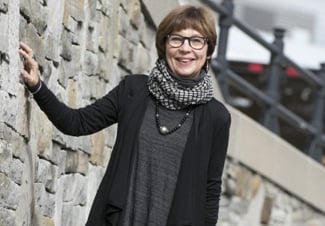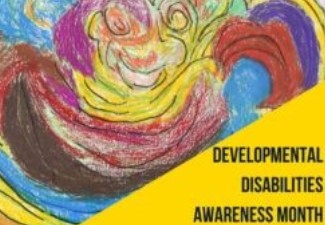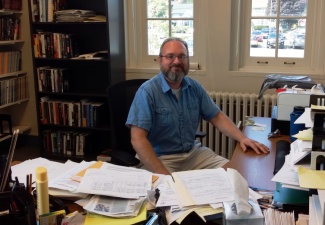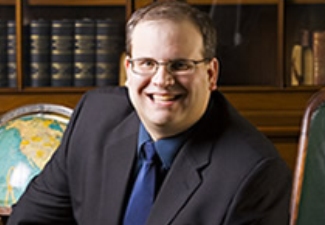Chinese Exhibition Opens Feb. 5 at Art Museum
PLATTSBURGH, NY __ The Plattsburgh State Art Museum is pleased to announce the opening
of an exhibition of 32 Chinese paintings from the Qing Dynasty (1644-1911) with a
few examples of Ming work and material of the early Republic. All are part of the
Pete and Marge Henricksen collection and were gathered in Japan in the late 1960s
and '70s - a time and place of extraordinary opportunity for collecting.
 An opening reception will be held in the Myers Fine Arts Building, Room 232 and the
Burke Gallery at the State University of New York College at Plattsburgh on Saturday,
Feb. 5 from 4:30 to 6 p.m. Prior to the reception, Dr. Sewall Oertling, the exhibit's
curator, will present a lecture on the material in Yokum Hall, Room 200. The reception
and lecture are free and open to the public.
An opening reception will be held in the Myers Fine Arts Building, Room 232 and the
Burke Gallery at the State University of New York College at Plattsburgh on Saturday,
Feb. 5 from 4:30 to 6 p.m. Prior to the reception, Dr. Sewall Oertling, the exhibit's
curator, will present a lecture on the material in Yokum Hall, Room 200. The reception
and lecture are free and open to the public.
Chinese painting is the evolution of an ancient tradition. The artist, over the centuries, has the responsibility of continuing the elements of style and meaning set as long as two thousand years ago in the Han Dynasty, but also cultivating change, innovation and exploration. Tradition and individuality became the two great emotional polarities of the art of Chinese painting. Han, Tang, Song, Ming and finally the period of this show, Qing (1644-1911), are the political and social ages that Chinese culture and visual painting move through.
Landscapes, daily life activities, birds, flowers and animals among others, become the main visual themes of the scroll paintings. The drama, intensity of attack, design and general energy of the brushwork create a great variation of feeling and insight within these visual themes or parameters.
Chinese painting, together with poetry and calligraphy, has been considered the highest and most profound forms of developed cultivated human expression. There is no division of feeling between them. A visual mark of a leaf or bird, a written symbol of a bird or a poem incorporating birds can all mean the same thing or together form a many-faceted insight into such a theme.
Art - like everything over the centuries in China - was carefully structured. All through the Han, Tang, Song, and Ming dynasties a certain order and logic was maintained. Art History, like everything else in the Middle Kingdom, was carefully ordered and recorded, prioritized and evaluated.
The Chinese order and evaluation of its artistic tradition was naturally adopted by other societies, particularly western, as they began to understand and collect Chinese art. In the lack of understanding and appreciation of the last great period of Chinese art, the Qing (1644-1911), this was particularly true. It was not highly prized and because it incorporated all of the past, like so much of the 19thCentury, it seemed confused. As in the political and economic evolution of China in the last 25 years, there has been a reunion of the attitudes and evaluations of the art of Qing.
This collection, organized by Professor Oertling through Cornell University's Johnson Museum as well as the exploratory exhibitions at the Metropolitan Museum, the Sackler Museum and Harvard, are indicators of the swift re-appraisal and appreciation of Chinese painting of this period.
New master artists, for example, Shen Xiang (1530-1580), Lu Xue (1688), and Li Yin (18th Century) are coming to the forefront and most important - late Qing is beginning to be seen as early modern. Like the changes that occurred throughout the world during this period, China's aesthetic and social reformation was in process.
The College is grateful to the Johnson Museum at Cornell University, Dr. Sewall Oertling - Curator, and to the proud possessors of this collection - Rodney "Pete" and Marge Henricksen of Skaneateles, N.Y., for the realization of this wonderful exhibition, which will be on display through April 3.
-- 30 --
News
Knelly Named Special Adviser to SUNY for Clinton Transition

Quebec Studies Presents Montreal Historian in Virtual Talk on 1913 School Strike

Campus Shines Light on Developmental Disabilities During Awareness Month and Beyond
Black Solidarity Day Officially Added to SUNY Plattsburgh’s Academic Calendar

SUNY Plattsburgh Political Science Professor to Zoom a Discussion on the Russian Invasion of Ukraine
